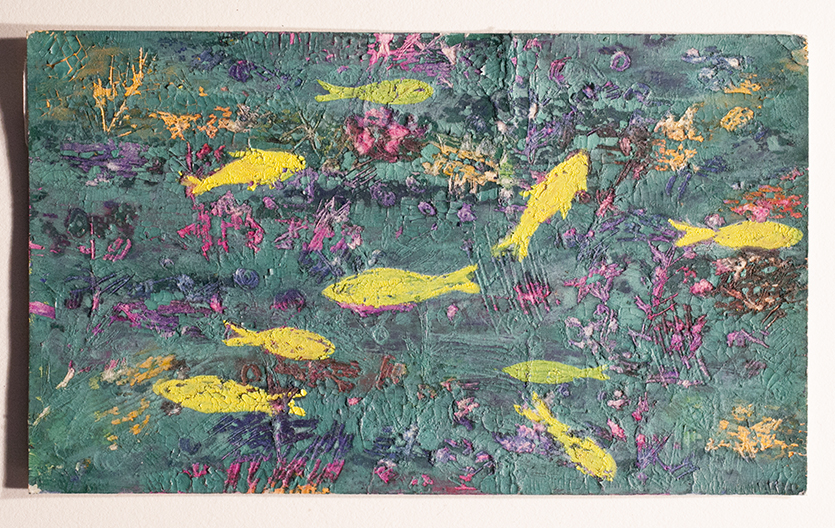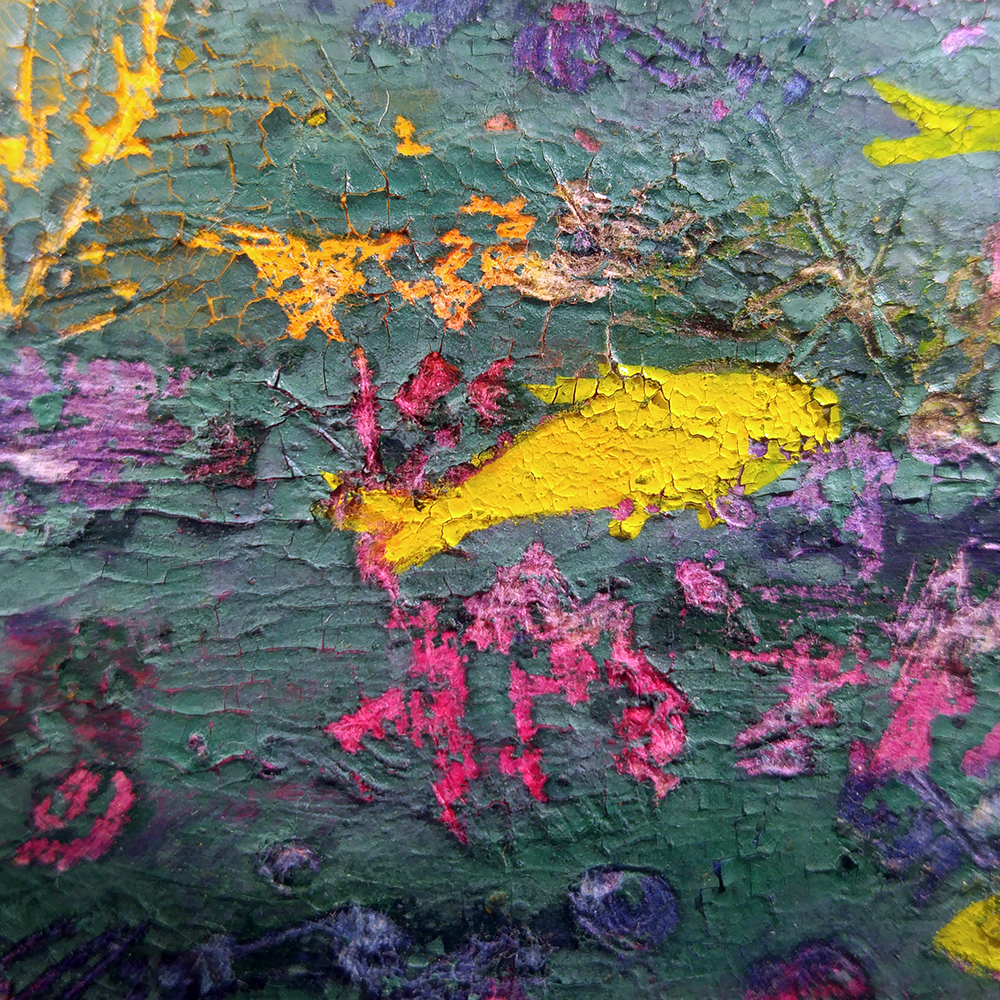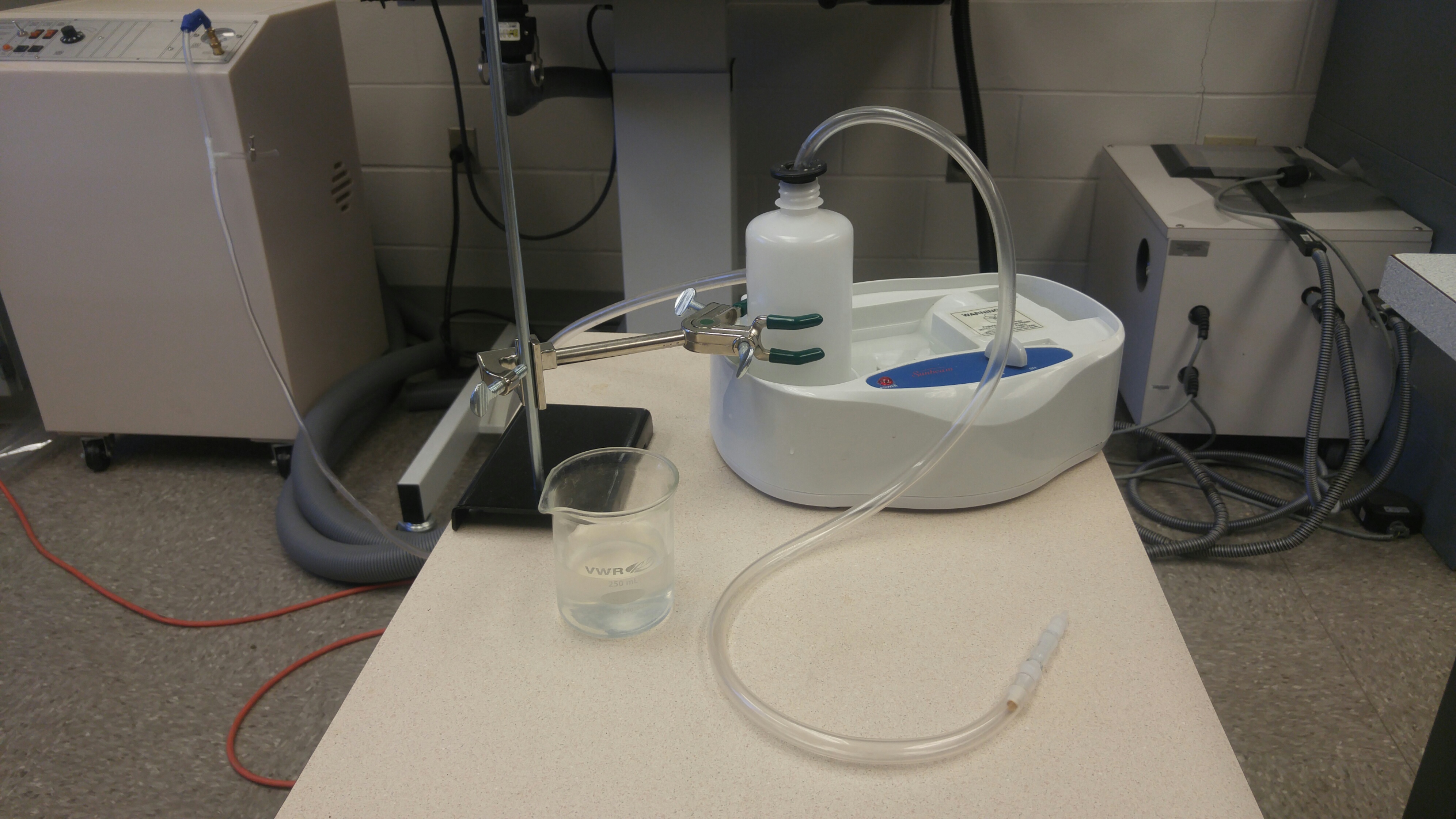I’ve been busy the past several months in the Paper Lab getting together the parts, purchase requests and wherewithal to construct an ultrasonic mister in order to care for a group of paintings needing some attention.
Last year, Lilly Library received a generous gift of over 450 paintings by the playwright, screenwriter and producer Clifford Odets
Soon after the library received this gift, the Paper Lab hinged and matted nearly all of the paintings for storage and safer handling and access. During this process we noticed that a number of the artworks were suffering from condition issues related to the paint media that Odets chose. Much of the work relies on a layering method of drawing and painting over wax crayon. Odets would scratch through the pastel and gouache paints he favored to reveal the crayon beneath (a.k.a. sgraffito).

Here is a photograph of one such painting- on the back of a postcard- in raking light.
You can see how the teal blue paint has been scratched away to reveal orange, pink and purple wax crayon beneath. However, though the technique allowed Odets to create some wonderful images, it also created what we conservators refer to as inherent vice. There is little adhesion between the media layers and as the upper water-based paint layers dried, they began to shrink in place causing minute cracks and more seriously, flaking and loss. This close-up shows what I mean (poor little flaky fish!)

In these circumstances, conservators perform a process called consolidation. Typically, the consolidant is a type of adhesive carefully chosen for a number of factors including, but not limited to, compatibility with the object physically, visually and chemically, ease of preparation, ease of application, quality of bond strength and ageing characteristics. Normally, the process would be carried out under a low-power microscope using a small brush and delicately applying the consolidant to the cracks and underneath the lifting paint, fastening it back down. With these paintings the scale of damage prohibits such an approach- the fish above is 2cm long, which makes each of the tiny flakes far smaller than a millimeter in dimension. My fine motor skills are excellent, but not that excellent!
Another method is called for: that of Ultrasonic Misting. Developed by the Canadian Conservation Institute in 1990, the ultrasonic mister allows greater control of the whole process of consolidation of powdery paint and pigments. Unfortunately one can’t readily buy such systems- at least not at affordable rates for an aerosol generator- so I set out to construct one myself. There are a number of published articles explaining how to make one as well as a number of institutions who have blogged about it in the past, such as this account from the UCLA/Getty Conservation Program. Within a month or so I had purchased and cannibalized the necessary parts and had it up and running:

What the device consists of is a domestic ultrasonic humidifier, with the upper water reservoir removed. We use this very humidifier routinely in the lab for the relaxation of library materials, so it was good to have on hand! Resting in about one inch of water over the oscillator within the humidifier is a LDPE plastic bottle containing the consolidant adhesive. Ultrasonic frequencies generated in the base of the humidifier travel through the bottle and cause cavitation to occur, generating a fine mist of adhesive to rise from the liquid. A pump (the large white cube in the background to the left) was borrowed from our vacuum suction table to drive air into the bottle (through the clear tube entering the back of the bottle), and then the adhesive-laden water vapor finds its way out the top, through another length of tube to be emitted through a small applicator nozzle. Also sitting in front of the device is the consolidant of choice. Can you guess what it is? There is a clue in the painting I chose to include earlier…
Next week, I’ll cover the pros and cons of the design and talk about the success of the treatments.
2 Comments
Thank you for those kind words, as well as having a look at our blog! I’ve come to really enjoy those paintings and hope others may too.
Dear Doug,
I simply wanted to say that I am very, very appreciative for the care and attention you have given these paintings. I was not aware of the problems you describe, and, fortunately, my father only used this technique very late in his life. I couldn’t be happier about having them at the Lilly.
With my thanks and good wishes,
Walt Odets